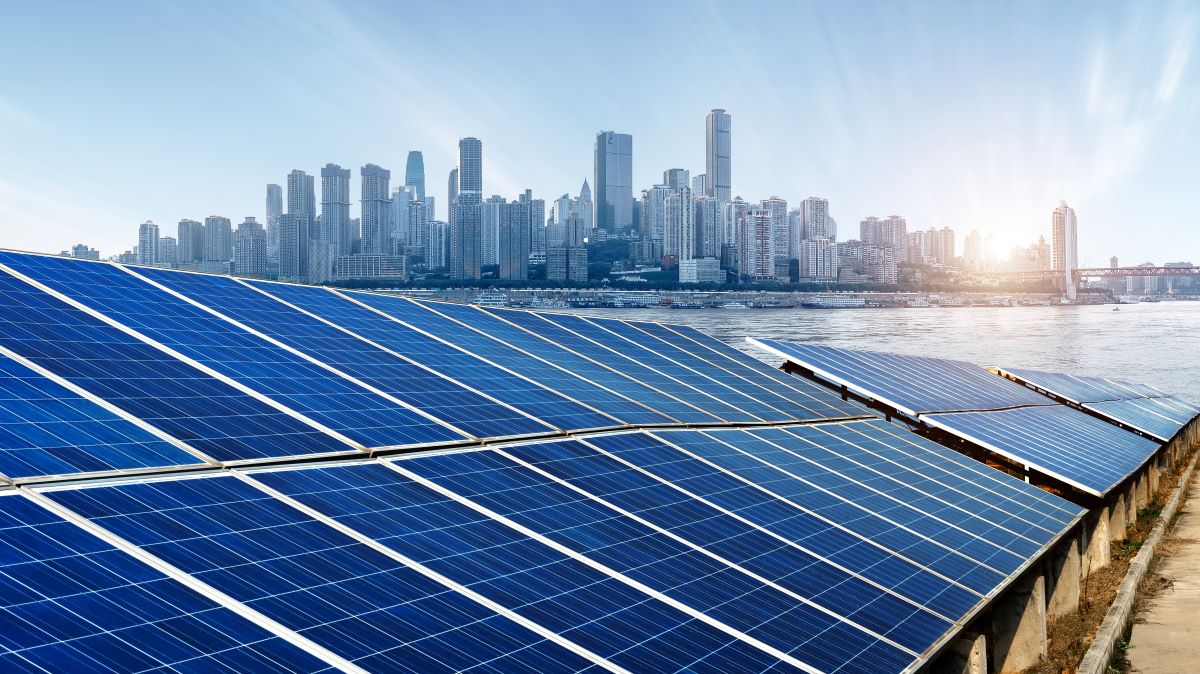Asia has not only been actively pursuing its climate goals but has also strengthened its place as a global leader in the renewable energy market. A recent report by Zero Carbon Analytics revealed that Asia’s wind and solar energy capacity witnessed an expansion of 35% per year since the 2015 Paris Agreement. The region surpassed the expansion rate of Europe and North America at 29% and 27%, respectively. In 2022, Asia also accounted for 52.5% of global wind and solar generation capacity touching 1,029 GW.
The report further revealed that the investments in the renewable energy market in Asia rose at an average rate of 23% annually, where the invested amount stood at $345 bn in 2022. According to the study by Zero Carbon Analytics, Asia’s growth in renewable capacity was driven by China, India, and Vietnam.
According to the study, between 2000 to 2022, China doubled its wind capacity about every 1.5 years and its solar capacity every 2.5 years. Also, from 2016 to 2022, the nation increased its solar capacity by about 405%, while its wind capacity surged 147%. China mainly allocated its investments towards increasing electric vehicles and reducing carbon fuels in the energy sector.
Meanwhile, India expanded its wind capacity by 533.7% and its solar capacity by 46.2% between 2016 and 2022, as per Zero Carbon Analytics. In 2022, the country also doubled investments in electrified transport to nearly $3.5 bn. Vietnam saw a massive increase in its solar capacity catapulted from 0.10 GW in 2018 to 18.48 GW in 2022, primarily due to incentives offered by the government towards solar projects. The report also stated that its wind energy capacity also touched 4GW in 2020.
It is noteworthy that both India and Vietnam, have seen a boom in two-wheeler electronification, while China has emerged as the global leader in exporting electric two-wheelers.
Other Asian countries ramping up their renewable energy capacity
Another research by natural resources analyst, Wood Mackenzie, predicted that overall, the Asia Pacific would invest $3.3 tn in power generation over the next 10 years, with 49% allocated for wind and solar energy.
“The Asia Pacific region is critical to the power sector’s energy transition as it grows to over half of global electricity demand this year….. the region is forecast to add 1,840 gigawatts (GW) of new capacity in the next five years, more than the rest of the world combined,” stated Alex Whitworth, Head of Asia Pacific Power & Renewables Research at Wood Mackenzie.
While both the above reports consider China and India as the major growth drivers, other countries in the region too have accelerated their efforts to expand renewable energy projects.
Earlier this month, Indonesia inaugurated a 192-megawatt peak (MWp) floating solar power plant costing $108 bn, on a reservoir in West Java province to enhance renewable energy sources and reduce coal usage. This is the world’s third-largest floating solar plant and with an expandable capacity of up to 1,000 MWp. Furthermore, Indonesia’s state utility Perusahaan Listrik Negara (PLN) has announced plans to set up an additional 31.6 GW of renewable power capacity between 2024 and 2033.
Last week, Germany’s RWE signed an agreement with South Korea’s Hyundai Engineering & Construction to develop offshore wind and green hydrogen in South Korea. This association is a step towards South Korea’s attempts to boost its renewable capacity to 108.3 GW by 2036 and its vision to attain net-zero emissions by 2050.
Still, a long way to go?
While most Asian countries have seen progress due to favourable government policies and targeted incentives towards renewable energy, there’s a lot that remains to be done to achieve their climate goals. According to a German think tank, Agora Energiewende, Asian economies require a fivefold increase in renewable energy deployment by 2030 to get closer to their net-zero targets.
The think tank stated that renewables in South, Southeast, and East Asia would need to supply 50% of total electricity by 2030, with 30% generated by wind and solar. It specified that Japan should install about 9 GW of solar and 3 GW of wind capacity per year on average. Meanwhile, Thailand and Indonesia need to set up close to 8 GW of solar capacity and 1 GW of wind capacity per year.
Agora Energiewende also highlighted the various regulatory and policy bottlenecks that still pose barriers to the region’s energy transition initiatives. It highlighted the issue of land unavailability in densely populated countries like Japan and Bangladesh, as well as complex project approval processes in South Korea. Also, high upfront investment costs for solar and wind energy plants with low-financing arrangements seem to be a common problem in the region.
According to Dimitri Pescia, Agora Energiewende’s programme lead for Southeast Asia, “One possible solution would be to allow priority dispatch for renewables, which would offer a clear market signal to incentivise flexibility…It can be very effective in increasing the share of renewables if combined with a structured retirement plan for fossil assets.”










 Australia
Australia China
China India
India Indonesia
Indonesia Japan
Japan Malaysia
Malaysia Philippines
Philippines Singapore
Singapore South Korea
South Korea Taiwan
Taiwan Thailand
Thailand Vietnam
Vietnam
 Germany
Germany Hong Kong
Hong Kong USA
USA Switzerland
Switzerland Singapore
Singapore








